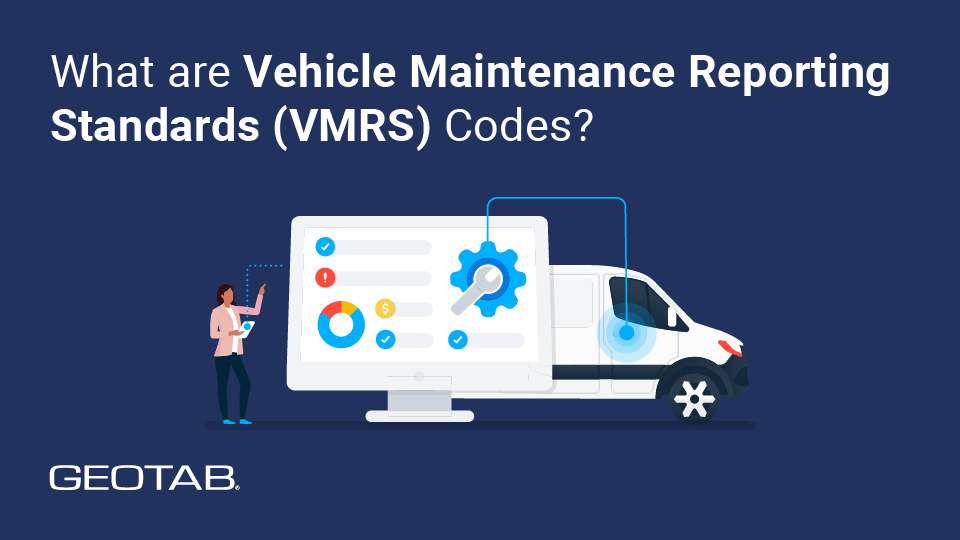What is a DTC code?
October 21, 2024
•4 minute read

Key Insights
- DTCs stand for Diagnostic Trouble Codes, which are standardized codes generated by a vehicle's onboard diagnostics system (OBD) to signal issues in various systems and components.
- Each DTC consists of a combination of four to five letters and numbers, with each character representing a specific problem within the vehicle.
What is a DTC code?
DTCs stand for Diagnostic Trouble Codes, which are standardized codes generated by a vehicle's onboard diagnostics system (OBD) to signal issues in various systems and components. The Society of Automotive Engineers (SAE) created these codes to help drivers and fleet managers identify malfunctions and enable timely maintenance and repairs. Each DTC consists of a combination of four to five letters and numbers, with each character representing a specific problem within the vehicle.
When one of your fleet vehicles suffers a malfunction, the first step to fixing it is learning what’s wrong. Diagnostic Trouble Codes (DTCs) make it easier for fleet managers to understand common issues in their vehicles so they can be quickly addressed. This makes understanding DTCs crucial to keeping your fleet vehicles in proper working condition.
In this blog post, you will learn the definition of DTCs, where they come from, the different types of DTCs, and how to interpret their meaning. At the end of the post, we will discuss how to use telematics to interpret and monitor DTCs and the benefits of relying on telematics solutions for your DTC needs.
Where do DTCs come from?
DTCs are primarily generated by the vehicle's OBD system and the J1939 protocol, making OBD and J1939 the two main standards of DTCs. Both of these systems continuously monitor vehicle performance and generate DTCs when they detect anomalies and malfunctions. In addition, some vehicles have manufacturer-specific DTCs. The best way to understand those codes is to consult the vehicle’s user manual.
The difference between OBD and J1939
The primary difference between the OBD system and the J1939 protocol is that OBD is most common in passenger vehicles and light-duty trucks. In contrast, the J1939 protocol is used in heavy-duty vehicles, buses, and industrial equipment. OBD-II is the latest standard for OBD, providing comprehensive diagnostic capabilities and supporting a wide range of vehicles. J1939 codes offer robust diagnostic information tailored to the needs of commercial fleets, with a focus on engine, transmission, and chassis systems. Because vehicle fleets can consist of all these types of vehicles, fleet managers need to know how to read both OBD and J1939 DTCs.
How to read a DTC code meaning
The most common way to read a DTC code is to plug an OBD-II scanner or a J1939 data logger into the vehicle’s port after the check engine light comes on. OBD-II ports are typically found under the dashboard below the steering wheel, while J1939 ports are usually located in accessible areas of heavy-duty vehicles. These devices will provide a four—or five-digit code that fleet managers can use to understand a malfunction.
A faster way to read DTC codes at scale is to use a telematics system. By placing a telematics device inside each fleet vehicle, the telematics system can automatically read and report DTCs. These systems also provide real-time alerts and detailed diagnostics, so fleet managers can instantly recognize problems and schedule maintenance to resolve them.
How to interpret an OBD-II DTC code
An OBD-II DTC consists of five characters, each of which is important to understanding the vehicle’s issue:
- First character (letter): Indicates in which system the anomaly has occurred: P for powertrain, B for body, C for chassis, and U for network.
- Second character (digit): Specifies whether the DTC code is 0 for generic or 1 for manufacturer-specific.
- Third character (digit): Identifies the subsystem in which the issue has occurred (for example, one is for fuel and air metering, two is for injector circuit, 3 is for ignition systems or misfires, etc.).
- Fourth and fifth characters (digits): Pinpoints the specific fault in the vehicle (for example, 01 represents a misfire in cylinder 1 of the engine).
For example, if a driver got the OBD code P0301, it would represent:
- P: Powertrain
- 0: Generic code
- 3: Ignition system or misfire
- 01: Cylinder 1 misfire detected
How to interpret a J1939 DTC code
J1939 DTCs consist of four fields that provide information about a DTC code.
- Suspect Parameter Number (SPN): This diagnostic fault code identifies the specific parameter or system where an issue occurs.
- Failure Mode Identifier (FMI): This fault code shows you the nature of the problem, such as a calibration error, sensor malfunction, or other data that does not make sense.
- Occurrence Counter (OC): This number shows how many times an error has occurred. For each error occurrence, the OC increases by 1.
- SPN Conversion Method (CM): Primarily found in older diagnostic versions, CM defines the byte alignment inside the DTC and shows how SPN and FMI should be addressed.
For example, if a truck driver saw the J1939 DTC SPN 102, FMI 4, it means the vehicle is suffering an issue with intake manifold pressure, and voltage was either below normal or shorted to a low source.
How to understand DTC severity
There are many DTCs they vary in severity, from minor issues that merit prompt attention to critical faults demanding immediate action. By understanding DTC severity, you can better prioritize maintenance and keep both your drivers and vehicles safe. Here are the three levels of DTC code severity:
- Minor: These issues that do not immediately impact vehicle performance (e.g., minor sensor malfunctions), but should be resolved before they cause significant problems.
- Moderate: These problems affect vehicle performance, but do not pose immediate risk to the driver or vehicle. A common example is a moderate engine misfire.
- Severe: These critical faults (such as high-temperature engine overheating) require urgent attention to help reduce vehicle damage and avoid risk to the driver and others nearby.
Common DTC codes and what they mean
Fleet managers who are familiar with common DTCs can perform diagnostics more quickly to get repairs done faster. Here are five common DTCs to watch out for:
- P0101: There is a fault in the vehicle’s mass air flow sensor or circuit.
- P0110: The intake air temperature sensor circuit has suffered a malfunction.
- P0442: A system leak has been detected in the vehicle’s evaporative emission control system.
- SPN 5246: There is an issue with the heavy vehicle’s after-treatment 1 inlet NOx sensor.
- SPN 639: The engine control unit in a heavy vehicle is experiencing an internal fault.
How to clear a DTC code
There are three proven ways to clear a DTC code:
- Telematics systems: Many telematics solutions enable fleet managers to remotely clear DTC codes after resolving a specific issue.
- OBD-II scanner or a J1939 data logger: Fleet managers and repair technicians can clear DTC codes by plugging in handheld scanners once repairs are completed.
- Disconnecting the vehicle battery: Fleet managers can also clear codes manually by disconnecting the battery. However, this is not recommended as it resets all vehicle systems and may erase data.
Using telematics to interpret and monitor DTC codes
Telematics devices can read and interpret DTC codes in real-time, making them much faster than manually plugging in an OBD-II scanner or a J1939 data logger. This saves a lot of time for fleet managers, helping them recognize vehicle malfunctions right away so they can schedule fleet maintenance proactively to reduce vehicle downtime. The detailed reports of telematics systems also enable historical data analysis, helping fleet managers track DTCs at scale to identify recurring problems and to avoid future issues.
By better understanding and managing DTCs, fleet managers can maintain a productive and efficient fleet more effectively. Tools like telematics make this easier by managing DTCs at scale to ensure timely repairs, reduce downtime, and improve fleet performance.
Table of Contents
Other Stories

What are Vehicle Maintenance Reporting Standards (VMRS) codes?
November 19, 2024
2 minute read

What is an engine control module (ECM)?
August 20, 2024
1 minute read

What is a telematics control unit (TCU)?
August 19, 2024
4 minute read